How to Make Science Fiction Become Fact, in Three Steps
Speakers at Smithsonian magazine’s “Future is Here” festival said be patient, persistent, but never, ever pessimistic
/https://tf-cmsv2-smithsonianmag-media.s3.amazonaws.com/filer/36/66/36669510-d85a-4bb3-ab13-c680e8c923e2/future-is-here-festival.jpg)
While speakers at the first day of Smithsonian magazine’s fourth annual “Future is Here” festival shared their thoughts on subjects as diverse as computer programming, the Zika virus, human space exploration, the future of the internet and the state of global fisheries, they all shared a common thread: there’s hope. Never give up—even if you have to wait a long time.
“Who will be the next President of the United States?” Smithsonian’s editor-in-chief Michael Caruso asked a Magic 8 Ball as he opened the day of TED-style talks on Saturday. “The future is notoriously difficult to predict. But never before has the distance between imagination and reality been so close, and the predictions scientists are making aren’t wild fantasies.”
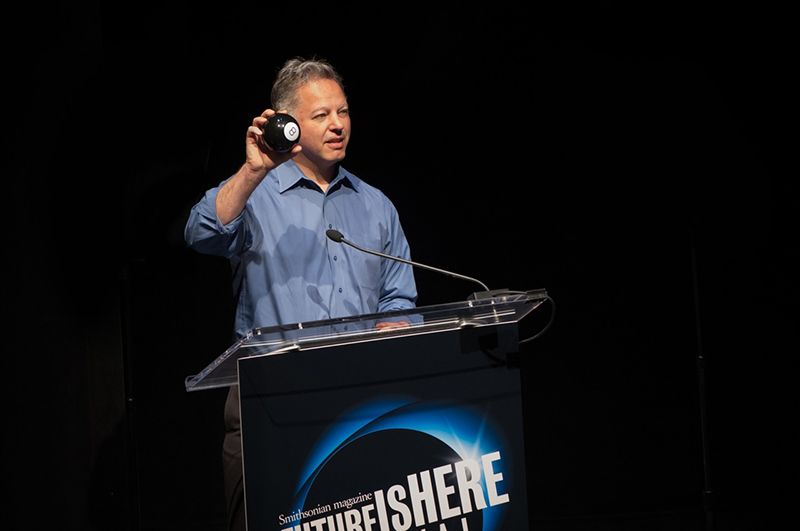
Caruso welcomed a roster of visionaries including Nicholas Negroponte, co-founder of the MIT Media Lab; Martine Rothblatt, founder of Sirius Radio and United Therapeutics; Vint Cerf, Google’s “chief internet evangelist” and co-developer of modern internet connection protocols; and former NASA astronaut Tony Antonelli, who helps Lockheed Martin shape its human spaceflight initiatives. Two of Jacques-Yves Cousteau’s granddaughters, Céline and Alexandra Cousteau, also took the stage to talk about their respective work in the Amazon and with the world’s oceans.
Sisyphean perseverance emerged as the theme of the day, encouraging those despairing visionaries out there, eager for the day when technology (hopefully) makes their ideas possible.
Rothblatt, obsessed with all things space for most of her life, said her whole focus shifted after her daughter Jenesis was diagnosed in 1994 with life-threatening and incurable pulmonary arterial hypertension (PAH). She founded United Therapeutics in 1996 after doing a deep-dive into potential treatments and convincing Burroughs Wellcome (and later GlaxoSmithKline) to allow her to license a compound, treprostinil, they’d shelved in favor of an easier-to-manufacture drug.
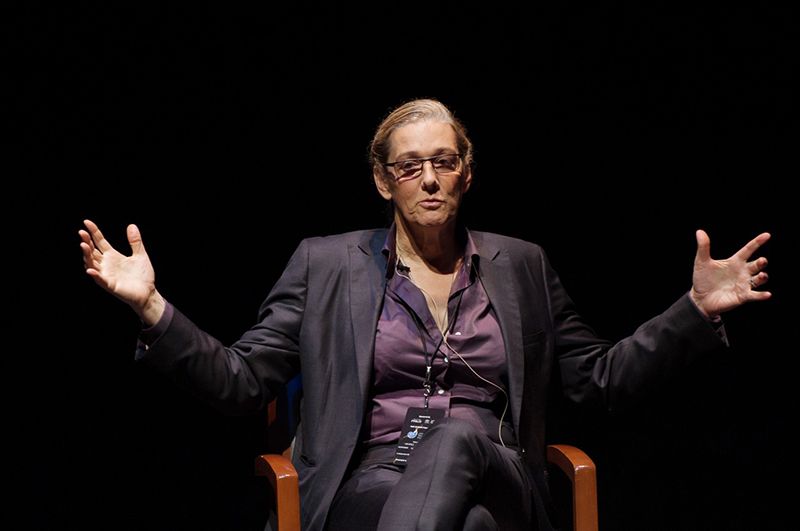
With no background in biotech, Rothblatt pursued a PhD in medical ethics even as she worked, at great personal cost and expense, with pharmaceutical scientists to develop treprostinil into a drug. The Food and Drug Administration (FDA) ultimately approved the drug, Remodulin, in 2002.
“I gave one doctor the money he said he needed to make it, and he finally produced half a gram,” Rothblatt told the audience. “But we needed dozens of grams for animal studies, hundreds of grams for animal studies, and, ultimately, hundreds of kilos to help people across the country. So we put the pedal to the metal.”
Today, Rothblatt’s company, United Therapeutics, annually produces enough drugs for tens of thousands of patients, including her daughter, who can now live out their lives beyond the three-year life expectancy once given at diagnosis.
“We’ve never turned away a patient who can’t pay,” she said. “We will give that medicine to them for free. It hasn’t stopped us from being a successful pharmaceutical company—we’ve found that doing the right thing helps you do the best thing.”
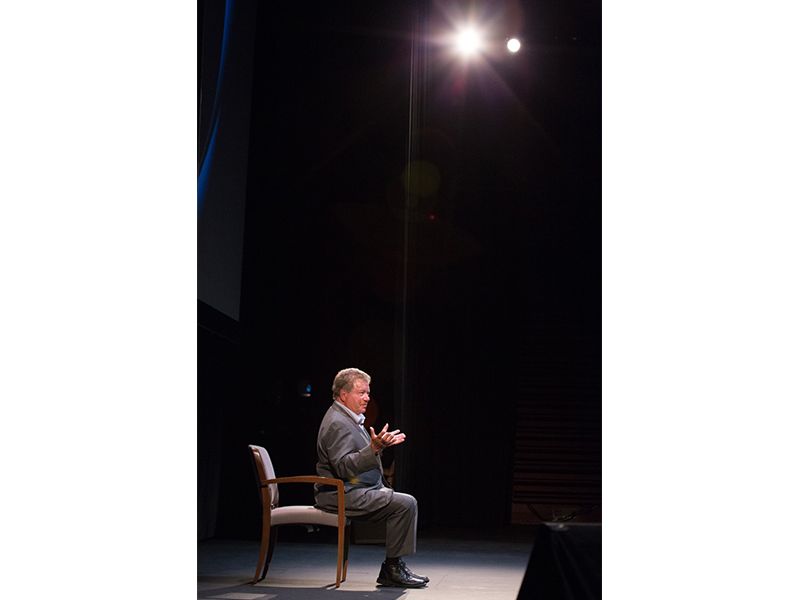
In a special appearance, actor William Shatner said that though science fiction can lay the groundwork for the future, progress is not always made with computer wizardry and bubbling test tubes. He spoke about recently witnessing an unusual and unexpected experiment in progress.
“We write and we think about all these highfalutin futuristic things that are going to take place, but buried in the basement of a small building in Philadelphia there are dogs sniffing for cancer in vials of blood,” he said. “It has nothing to do with the future as imagined by a show called 'Star Trek.'”
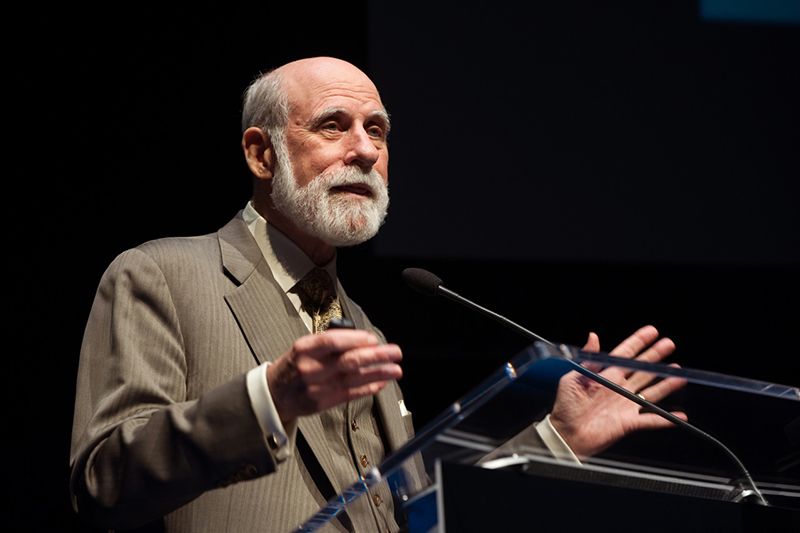
Google’s Vint Cerf described how the genesis of the internet was, at heart, a bottom-up enterprise. Built to satisfy a military defense agency that needed a cost-effective communications network compatible with a range of computer brands, Cerf said that four decades of evolution shed some light on what is yet to come.
“The thing you carry in your pocket once took an entire van to do,” Cerf said, holding up a cell phone. “Now we’re faced with a new invasion, devices you wouldn’t expect to be part of the internet environment. I used to tell jokes that every lightbulb will have its own IP address. Well, now I can’t joke about that.”
In the current day, between 3 and 3.5 billion people use three to five devices every day, Cerf said, for a global total of 10 to 15 billion devices. Looking into a future where an “internet of things” connects humans and a host of objects, it’s completely reasonable, Cerf said, to predict that by 2036, the planet will have 8 to 10 billion users, and the average person will use or interact with around 100 devices per day, from phones to tablets to embedded sensors. That adds up to one trillion devices.
“We need to get smarter about how we use our resources,” Cerf said. “How we gather our data can really make a difference.”
To that end, he described Google’s ongoing projects using innovative sensing, from contact lenses that can measure a diabetic’s glucose level, to ingestible nanobots to diagnose disease from inside the body. Like the trucks used to test out network connectivity in the 1970s, Cerf suggested today’s cutting-edge technology only has room to shrink.
“3D printers today are large and clunky, but over time those printers could make smaller and smaller stuff,” Cerf said. “Maybe one day the 3D printers can print even smaller printers, eventually printing at the molecular level.”
And, of course, Google is working on making sure internet works in space, too.
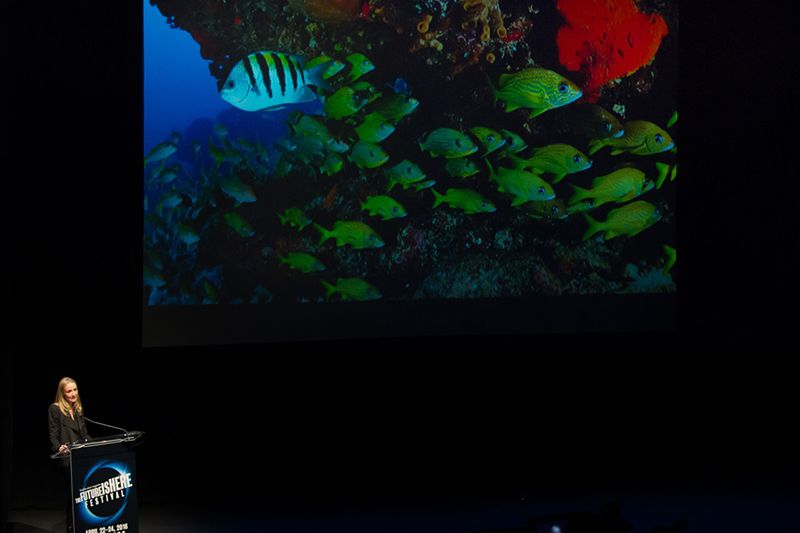
In the year of the 40th anniversary of the Viking mission to Mars, Lockheed Martin’s Antonelli said today’s space missions are paving the way for the next steps, including an asteroid retrieval program and the Orion spacecraft, which will eventually take humans to Mars. (People took selfies all day with a quarter-scale replica of the Orion at the festival.)
In addition to the current missions surveying Mars, including the Mars Reconnaissance Orbiter, which takes its own surveys of the Martian surface as well as relays messages between Earth and the Martian rovers, there’s also Maven, a Martian atmospheric observatory, and Juno, which will arrive at Jupiter this summer to map the planet’s atmosphere and magnetic and gravitational fields.
Osiris-Rex (Origins, Spectral Interpretation, Resource Identification, Security, Regolith Explorer) will launch this fall destined for the asteroid Bennu, Antonelli said. Close enough to reach, large enough to land upon, and old enough that it reflects the early composition of the solar system, Bennu is thought to hold the molecular ancestors of life on Earth, but also whizzes scarily close to our planet on a regular basis. The samples from the Osiris-Rex mission will help scientists plan for a possible impact intervention mission, and also help aspiring asteroid miners know what resources they might find.
Despite the fact that new space missions are popping up one after another, it’s today’s students who will one day be making the next big steps into space.
“Keep in mind, that the first person to go to Mars is in school today,” Antonelli said. “Well, maybe not today, since it’s a Saturday,” he added.
/https://tf-cmsv2-smithsonianmag-media.s3.amazonaws.com/accounts/headshot/Michelle-Donahue.jpg)
/https://tf-cmsv2-smithsonianmag-media.s3.amazonaws.com/accounts/headshot/Michelle-Donahue.jpg)